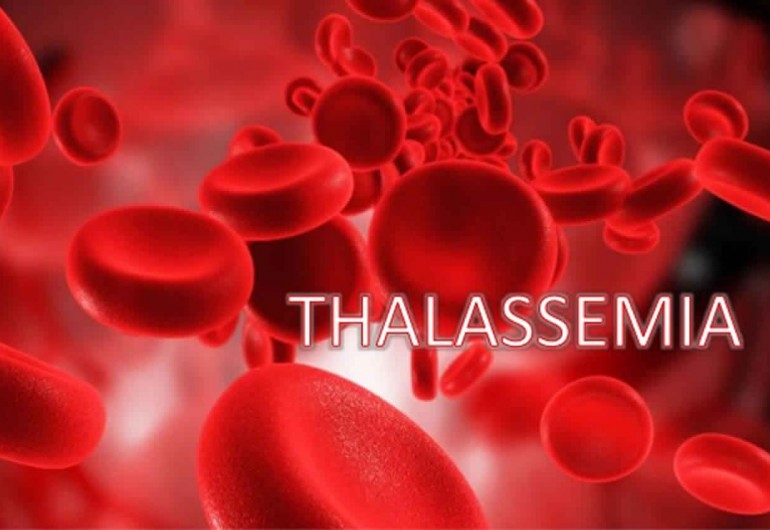Introduction: What Is Thalassemia?
Thalassemia is a group of inherited blood disorders that affect your body’s ability to produce normal haemoglobin an essential protein in red blood cells that carries oxygen. When haemoglobin production is faulty, the body can’t transport enough oxygen, leading to anaemia, fatigue, and other complications.
While mild cases may go unnoticed, more severe types of thalassemia can cause lifelong medical challenges, frequent blood transfusions, and potential organ complications.
Understanding this condition is key for early detection, better treatment, and improving quality of life especially in countries like India, where thalassemia is more common due to genetic prevalence.
What Causes Thalassemia?
Thalassemia is caused by mutations in the genes responsible for haemoglobin production. These mutations are passed from parents to children through DNA.
You inherit:
-
One set of genes from each parent
-
If only one gene is faulty → Thalassemia Minor (Carrier)
-
If both genes are faulty → Thalassemia Major (Severe condition)
There are two main types of haemoglobin chains involved:
-
Alpha chains → problems cause Alpha Thalassemia
-
Beta chains → problems cause Beta Thalassemia
Types of Thalassemia
1. Alpha Thalassemia
-
Caused by missing or mutated alpha-globin genes.
-
Four genes control alpha production; severity depends on how many are affected:
-
1 gene: silent carrier
-
2 genes: alpha thalassemia trait (mild anaemia)
-
3 genes: Haemoglobin H disease (moderate to severe anaemia)
-
4 genes: Hydrops fetalis (often fatal before or shortly after birth)
-
2. Beta Thalassemia
-
Caused by mutations in the beta-globin gene.
-
Two main forms:
-
Thalassemia Minor: One gene affected; mild or no symptoms
-
Thalassemia Major (Cooley’s Anaemia): Both genes affected; severe anaemia, requires lifelong transfusions
-
Symptoms of Thalassemia
Symptoms vary depending on the type and severity of the condition.
Mild (Thalassemia Minor):
-
Mild anaemia
-
Slight fatigue
-
Often asymptomatic
Moderate to Severe (Thalassemia Major or Hemoglobin H disease):
-
Pale or yellowish skin
-
Severe fatigue and weakness
-
Delayed growth and puberty
-
Bone deformities (especially facial bones)
-
Enlarged spleen or liver
-
Shortness of breath
-
Dark urine
Symptoms typically appear within the first two years of life in severe cases.
How Is Thalassemia Diagnosed?
Thalassemia is usually diagnosed through:
-
Complete Blood Count (CBC): reveals low Hemoglobin and red cell abnormalities
-
Hemoglobin Electrophoresis: identifies abnormal types of Hemoglobin
-
Genetic Testing: confirms mutations in alpha or beta-globin genes
-
Prenatal Testing: for families with known history
Treatment Options for Thalassemia
1. Regular Blood Transfusions
-
Necessary for moderate to severe thalassemia
-
Helps maintain healthy Hemoglobin levels
-
Over time, transfusions can lead to iron overload
2. Iron Chelation Therapy
-
Medication to remove excess iron from the body
-
Common chelators: Deferasirox, Deferoxamine
-
Prevents heart and liver damage due to iron buildup
3. Folic Acid Supplements
-
Support red blood cell production
-
Often prescribed along with transfusions
4. Bone Marrow or Stem Cell Transplant
-
Only potential cure for thalassemia
-
Most successful in children with matched donors
-
Carries risk and is not suitable for all patients
5. Gene Therapy (Experimental)
-
Emerging treatment aiming to fix the faulty gene
-
Not widely available yet, but promising for the future
Living with Thalassemia: Lifestyle Tips
Managing thalassemia is not just about medical treatment lifestyle and nutrition play a key role in improving quality of life.
Diet Tips:
-
Avoid iron-rich foods if on regular transfusions (red meat, liver, iron-fortified cereals)
-
Eat foods rich in calcium and vitamin D for bone health
-
Include folate-rich foods like leafy greens, lentils, citrus
-
Stay hydrated and eat small, energy-dense meals if appetite is low
Lifestyle Tips:
-
Avoid infections; maintain hygiene and vaccinations
-
Monitor for signs of iron overload
-
Practice gentle physical activity to prevent fatigue
-
Stay in touch with a haematologist or thalassemia specialist
Thalassemia Prevention: Can It Be Avoided?
While you can’t prevent thalassemia after birth, carrier screening and genetic counselling are key to preventing its transmission.
If both partners are carriers, prenatal testing can help assess the risk and inform family planning decisions.
In India and Southeast Asia, premarital or early screening programs are vital in reducing thalassemia birth rates.
Thalassemia may be a lifelong condition, but with early diagnosis, proper care, and the right lifestyle, patients can live fulfilling lives. Increased awareness, regular monitoring, and access to care are key to managing this inherited blood disorder effectively.
If you or a loved one is affected, remember support, science, and strength go a long way in living well with thalassemia.



